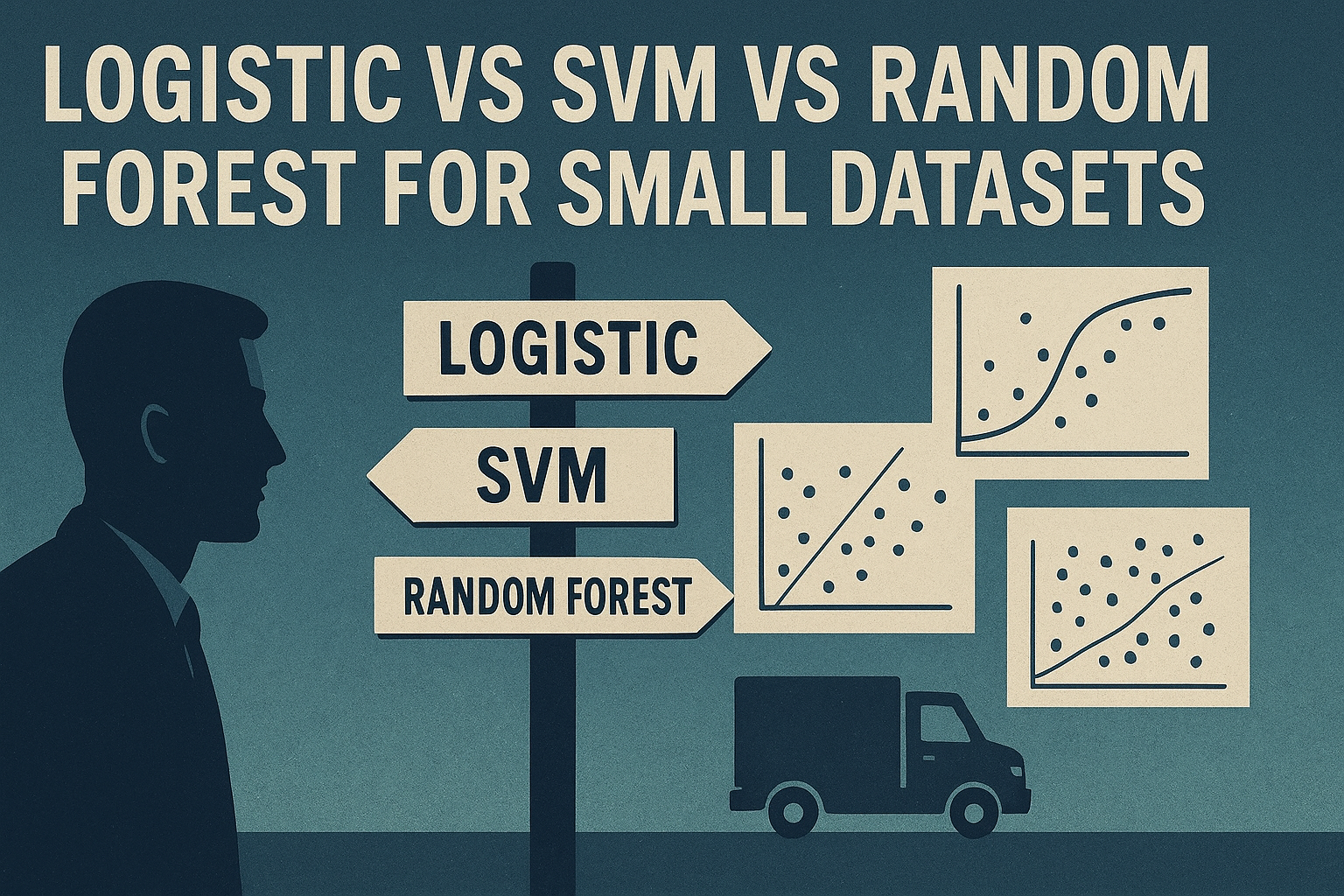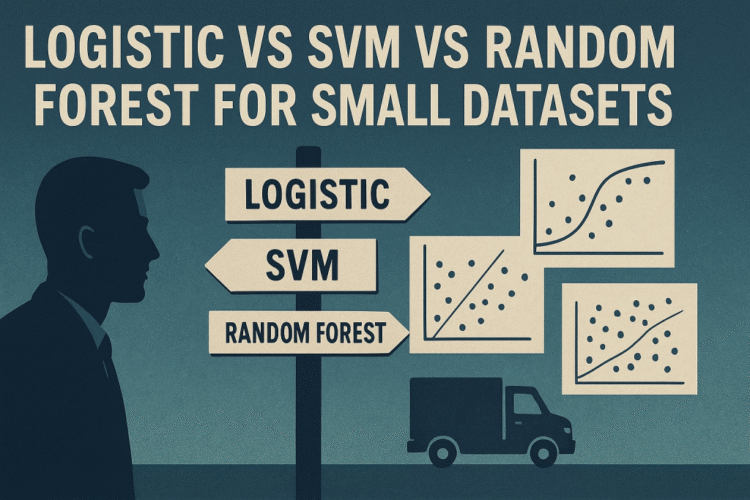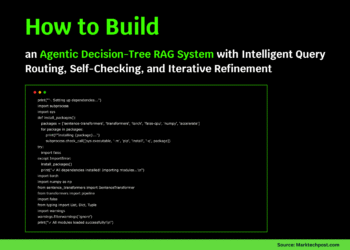
Logistic vs SVM vs Random Forest: Which One Wins for Small Datasets?
Image by Editor | ChatGPT
Introduction
When you have a small dataset, choosing the right machine learning model can make a big difference. Three popular options are logistic regression, support vector machines (SVMs), and random forests. Each one has its strengths and weaknesses. Logistic regression is easy to understand and quick to train, SVMs are great for finding clear decision boundaries, and random forests are good at handling complex patterns, but the best choice often depends on the size and nature of your data.
In this article, we’ll compare these three methods and see which one tends to work best for smaller datasets.
Why Small Datasets Pose a Challenge
While discussions in data science emphasize “big data,” in practice many research and industry projects must operate with relatively small datasets. Small datasets can make building machine learning models difficult because there is less information to learn from.
Small datasets introduce unique challenges:
- Overfitting – The model may memorize the training data instead of learning general patterns
- Bias-variance tradeoff – Choosing the right level of complexity becomes delicate: too simple, and the model underfits; too complex, and it overfits
- Feature-to-sample ratio imbalance – High-dimensional data with relatively few samples makes it harder to distinguish genuine signal from random noise
- Statistical power – Parameter estimates may be unstable, and small changes in the dataset can drastically alter outcomes
Because of these factors, algorithm selection for small datasets is less about brute-force predictive accuracy and more about finding the balance between interpretability, generalization, and robustness.
Logistic Regression
Logistic regression is a linear model that assumes a straight-line relationship between input features and the log-odds of the outcome. It uses the logistic (sigmoid) function to map predictions into probabilities between 0 and 1. The model classifies outcomes by applying a decision threshold, often set at 0.5, to decide the final class label.
Strengths:
- Simplicity and interpretability – Few parameters, easy to explain, and perfect when stakeholder transparency is required
- Low data requirements – Performs well when the true relationship is close to linear
- Regularization options – L1 (Lasso) and L2 (Ridge) penalties can be applied to reduce overfitting
- Probabilistic outputs – Provides calibrated class probabilities rather than hard classifications
Limitations:
- Linear assumption – Performs poorly when decision boundaries are non-linear
- Limited flexibility – Predictive performance plateaus when dealing with complex feature interactions
Best when: Datasets with few features, clear linear separability, and the need for interpretability.
Support Vector Machines
SVMs work by finding the best possible hyperplane that separates different classes while maximizing the margin between them. The model relies only on the most important data points, called support vectors, which lie closest to the decision boundary. For non-linear datasets, SVMs use the kernel trick to project data into higher dimensions.
Strengths:
- Effective in high-dimensional spaces – Performs well even when the number of features exceeds the number of samples
- Kernel trick – Can model complex, non-linear relationships without explicitly transforming data
- Versatility – A wide range of kernels can adapt to different data structures
Limitations:
- Computational cost – Training can be slow on large datasets
- Less interpretable – Decision boundaries are harder to explain compared to linear models
- Hyperparameter sensitivity – Requires careful tuning of parameters like C, gamma, and kernel choice
Best when: Small-to-medium datasets, potentially non-linear boundaries, and when high accuracy is more important than interpretability.
Random Forests
Random forest is an ensemble learning method that constructs multiple decision trees, each trained on random subsets of both samples and features. Every tree makes its own prediction, and the final result is obtained by majority voting for classification tasks or averaging for regression tasks. This approach, known as bagging (bootstrap aggregation), reduces variance and increases model stability.
Strengths:
- Handles non-linearity – Unlike logistic regression, Random Forests can naturally model complex boundaries
- Robustness – Reduces overfitting compared to single decision trees
- Feature importance – Provides insights into which features contribute most to predictions
Limitations:
- Less interpretable – While feature importance scores help, the model as a whole is a “black box” compared to logistic regression
- Overfitting risk – Though ensemble methods reduce variance, very small datasets can still produce overly specific trees.
- Computational load – Training hundreds of trees can be heavier than fitting logistic regression or SVMs
Best when: Datasets with non-linear patterns, mixed feature types, and when predictive performance is prioritized over model simplicity.
So, Who Wins?
Here are some distilled, opinionated general rules:
- For very small datasets (<100 samples): Logistic regression or SVMs usually outperform random forest. Logistic regression is perfect for linear relationships, while SVM handles non-linear ones. Random forest is risky here, as it may overfit.
- For moderately small datasets (a few hundred samples): SVMs provide the best mix of flexibility and performance, especially when kernel methods are applied. Logistic regression may still be preferable when interpretability is a priority.
- For slightly larger small datasets (500+ samples): Random forest begins to shine, offering strong predictive power and resilience in more complex settings. It can find complex patterns that linear models may miss.
Conclusion
For small datasets, the best model depends on the type of data you have.
- Logistic regression is a good choice when the data is simple and you need clear results
- SVMs work better when the data has more complex patterns and you want higher accuracy, even if it’s harder to interpret
- Random forest becomes more useful when the dataset is a bit larger, as it can capture deeper patterns without overfitting too much
In general, start with logistic regression for minimal data, use SVMs when patterns are harder, and move to random forest as your dataset grows.
















